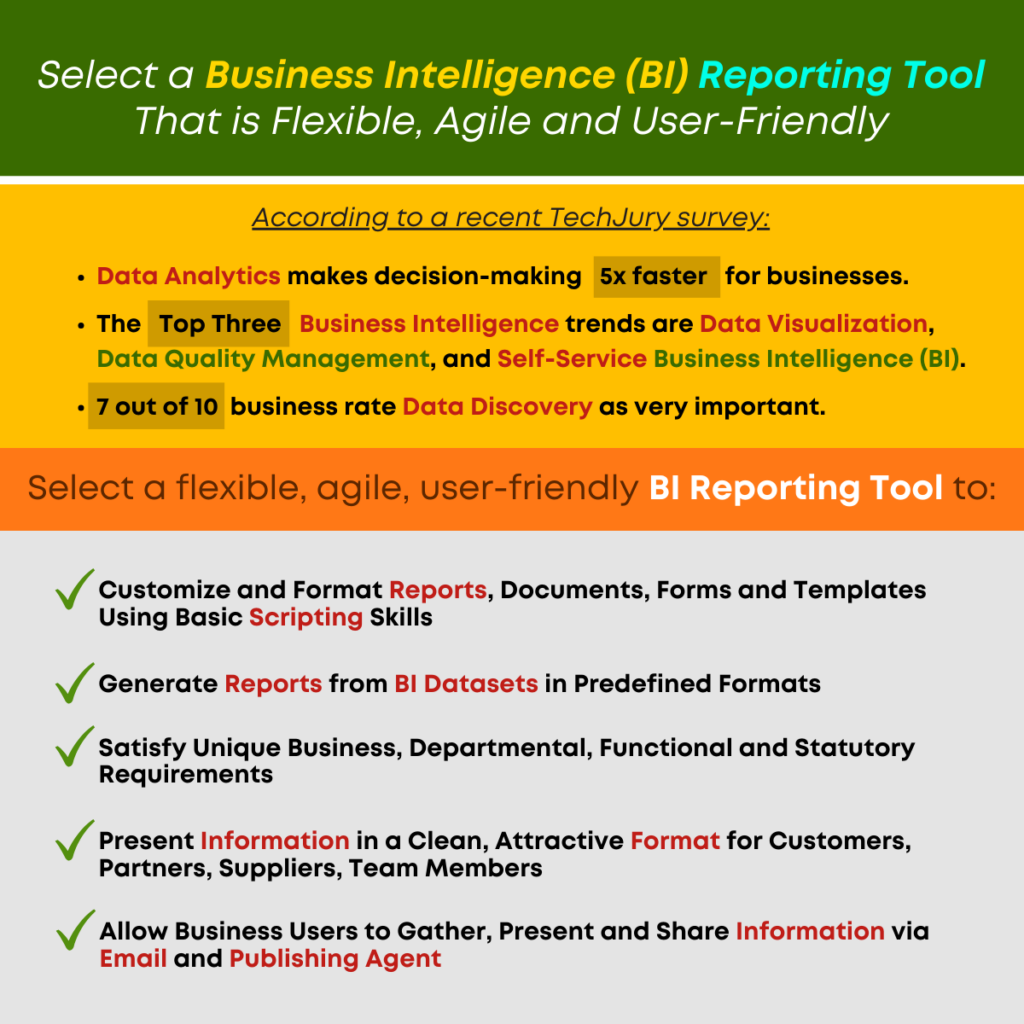Incorporate Data Into User Roles with Mobile BI
If you are a business executive or an IT professional, you have probably seen a number of articles about the importance of Business Intelligence in industry publications and trade journals. If you are still unconvinced or uncertain about the critical importance of business intelligence (BI) and analytics for businesses like yours, here are some sobering, surprising and impressive statistics to ponder.
- The global business intelligence adoption rate is 26%.
- Organizations use 4 or more different business intelligence tools on average.
- Organizations leave 97% of gathered data unused.
- 74% of employees feel unhappy or overwhelmed when working with data.
- Businesses using business intelligence are 5 times more likely to reach faster decisions than those that do not.
- Bad data costs the US economy $3.1 trillion each year.
When you review these statistics, you will notice that some of the issues described can be resolved by the careful selection of the right software and solutions to satisfy your business, your team needs and your data infrastructure.

If you are planning to acquire or upgrade a business intelligence or analytics app or solution to provide self-serve augmented analytics for your business users and improve productivity, access and data sharing, you will want to include the review of mobile business intelligence solutions in your requirements.
‘Mobile business intelligence (BI) solutions improve user adoption, ensure access to data from anywhere and encourage the use of data-driven information across the enterprise.’
The right mobile BI tools can address the issues and statistics listed above in the following ways:
- The global business intelligence adoption rate is 26% – Mobile BI tools will increase the user adoption rate by providing intuitive data analytics that users can access from anywhere at any time, making these tools an important part of each team member’s tool box.
- Organizations use 4 or more different business intelligence tools on average – The right mobile BI solution can integrate data from disparate data sources, and allow users to visualize in a way that is meaningful to each team member. It can optimize technology infrastructure and mitigate the issue of data silos and complex data mining and data gathering.
- Organizations leave 97% of gathered data unused – Data is often misunderstood, misused or unused simply because team members and the enterprise do not know how to leverage, gather and analyze the data, or because the IT and/or data science team is short on resources and does not have the time to produce reports. Mobile BI tools are designed to be used by business professionals on a daily basis and to encourage data literacy and data democratization across the enterprise.
- 74% of employees feel unhappy or overwhelmed when working with data – Understand and address your business user concerns and make data more accessible, easier to understand and use, concise and clear, so that every user can optimize data, make confident decisions and share and collaborate without data science skills or sophisticated data analytical experience.
- Businesses using business intelligence are 5 times more likely to reach faster decisions than those that do not – Improve productivity, time to market and return on investment (ROI) and total cost of ownership (TCO) to gain a competitive advantage with mobile tools and easy-to-use techniques that will enable fact-based decisions.
- Bad data costs the US economy $3.1 trillion each year – Banish bad data by integrating your data sources and analyzing and presenting data in a mobile environment to gain insight into trends, opportunities, issues and problems and reveal clear, concise soluti
‘If you are planning to acquire or upgrade a business intelligence or analytics app or solution to provide self-serve augmented analytics for your business users and improve productivity, access and data sharing, you will want to include the review of mobile business intelligence solutions in your requirements.’
Mobile business intelligence (BI) solutions improve user adoption, ensure access to data from anywhere and encourage the use of data-driven information across the enterprise.
If you want to support your business user team and provide a foundation for BI tools that will better serve your team and your customers, explore Smarten Mobile BI benefits and features, with powerful functionality and access for your business users including out-of-the-box Mobile BI and advanced analytics for every team member. For more information on Mobile BI and Augmented Analytics, read our article, ‘Mobile BI Business Use Provides Real Advantages.’
Original Post : Mobile BI Tools Solve Many Enterprise Issues!
- Tags Advanced Analytics, Advanced Analytics for Business User, Analytics and BI Platform, Augmented Analytics, Augmented Analytics Benefits, Augmented Analytics India, BI Tools, Dashboard Tools, Mobile Analytics, Mobile BI, Mobile BI and Augmented Analytics App, Mobile BI App, Smarten Analytics, Smarten Mobile BI App









